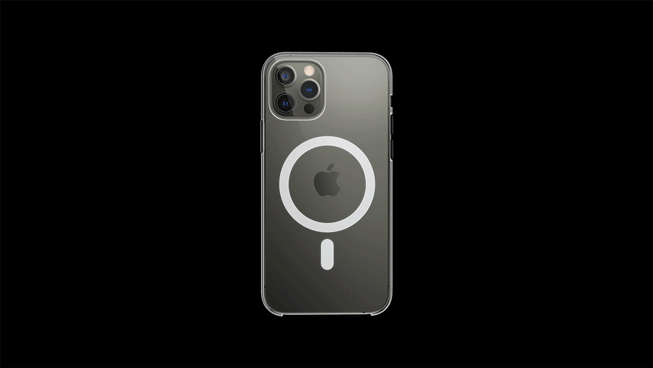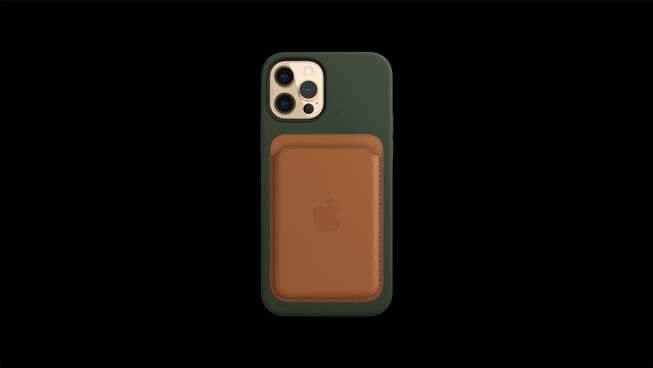Starting with iPhone 12, Apple no longer includes wall adapters in every box as it moves to reduce package waste (and make some cash on accessories). Its newest smartphones—including the iPhone 14 lineup announced this week—also include support for Apple’s magnetic MagSafe charging. Here’s what you need to know about charging your iPhone 12, iPhone 13, or iPhone 14, and what you might need to purchase.
What Comes With the iPhone 14?
The iPhone 14 box includes the phone itself, a USB-C to Lightning Cable, and instructions.
(Credit: PCMag / Apple)
The newest iPhones come with a USB-C-to-Lightning cable, and that’s pretty much it. Out of the box, those who don’t have any Apple power adapters will need a USB-C power adapter to charge.
Plus, the newer iPhones ship without EarPods, so you’ll need to supply your own headphones to listen to music and podcasts. Apple sells its own AirPods wireless earbuds (and second-gen AirPods Pro launch next week), but there are plenty of alternatives that won’t break the bank, not to mention our picks for best wireless headphones and those made with runners in mind.
As Apple explained during its iPhone 12 event a few years ago, excluding the power adapter reduces the size of the box. This means 70% more devices can fit on a shipping pallet on their way to users, allowing the company to stock shelves faster and reduce yearly carbon emissions by 2 million metric tons, it says.
How Do I Charge the iPhone 14?
Recent iPhones have a Lightning port on the bottom edge, like the iPhone 13 pictured here.
(Photo: Molly Flores)
Unlike most new Android phones, Apple has not fully transitioned the iPhone to USB-C—which typically provides faster charging speeds—so the iPhone 14 still includes the typical Lightning charge port. This means you can use an existing Lightning cable and traditional USB-A wall adapter to charge. With the included USB-C-to-Lightning cable, though, you can also plug your iPhone directly into your Mac or another device like a lamp (Opens in a new window)or light switch(Opens in a new window) that has a USB-C port.
Additionally, the newest iPhones are compatible with Qi wireless charging pads. However, Apple’s main focus for charging is its built-in, fast charging MagSafe magnetic power connector.
What Is MagSafe?

For years, Apple used the term MagSafe to describe its computers’ charging cable connectors. Their magnetized tips “snapped” into the magnetized MacBook charging ports—and snapped out if disturbed so as not to bring a Mac laptop crashing to the floor, for example. They disappeared a few years ago as Apple transitioned the MacBook lineup to USB-C charging and data transfer, but returned last fall in the M1 Pro/M1 Max-based MacBooks as “MagSafe 3.”
Apple offers a similar technology in recent iPhones in the form of a magnetized “hockey puck” disc that looks like a big Apple Watch charger and snaps to the rear of the phone. This MagSafe connector includes a USB-C cord that plugs into a power source and charges at 15W.
What’s the Fastest Way to Charge the iPhone 14?
Since iPhone 5, Apple has shipped its iPhones(Opens in a new window) with a 5W USB power adapter in the box, with the exception of the iPhone 11 Pro and Pro Max, which shipped with an 18W USB-C power adapter. (Apple’s iPads also ship with 10W or 12W USB or 18W or 20W USB-C power adapters, depending on the model.) So unless you bought your first iPhones after the iPhone 12, you probably have one of them lying around.
Since iPhone 8, meanwhile, Apple’s smartphones have supported fast charging, which allows for a 50% charge in 30 minutes. But for fast charging to work, you have to use an Apple USB-C-to-Lightning cable and one of these adapters: Apple 18W, 29W, 30W, 61W, 87W or 96W USB-C Power Adapter; or a third-party USB-C power adapter that supports USB Power Delivery (USB-PD).
Apple iPhone 8 and above also support Qi wireless charging(Opens in a new window), which charges those iPhones at 7.5W via a supported wireless charging pad. To get even faster wireless charging speeds than a Qi charger, the Apple-branded MagSafe (Opens in a new window)charging system will power up your phone at 15W.
Plus, the magnetic snap of MagSafe ensures your phone is actually charging, unlike a Qi charger which can slip out of place, leaving you scrambling for power at the last second.
So, if you have a 5W charging adapter, a Qi wireless charging pad, and the MagSafe connector, MagSafe will deliver the fastest, most reliable charging times. The question is whether it’s worth an extra $39(Opens in a new window) for the MagSafe connector. If you’re always in need of a charge, the answer might be yes. For others, an existing power adapter or charging pad might do the trick, and that $40 is better spent on a rugged case to protect your pricey new smartphone.
What Do I Need to Buy?
(Image: Apple)
If you already have an iPhone or iPad with a Lightning cable, you don’t need to buy anything. Plug the power adapter you already own into the wall, plug the Lightning end into your iPhone 14, and you’re ready to go.
If you want the MagSafe charger to experience the “snap” effect that secures and charges your phone, it will cost an additional $39(Opens in a new window) for the charger and 1m USB-C integrated cable (you have other options, too). Apple also sells a foldable MagSafe Duo Charger(Opens in a new window) that includes a dock for your Apple Watch for $129.
Recommended by Our Editors
For a faster charging experience than Apple’s 5W power adapter, a separate 20-watt USB-C power adapter(Opens in a new window) can be used for both the supplied Lightning-to-USB-C cable and the MagSafe charger. Previously $29, you can now get it for $19.
Though you will be getting a Lightning-to-USB-C cable with the iPhone 14, Apple also sells longer Lightning-to-USB-C cables; grab them in 1m(Opens in a new window) or 2m(Opens in a new window) lengths for $19 and $29, respectively. You can find cheaper ones on Amazon(Opens in a new window), too.
Does MagSafe Work With a Case?

Short answer: Yes. But there are caveats.
Those who want to protect their iPhone 14 with a case and make use of MagSafe magnetic charging will need a MagSafe-compatible accessory. Naturally, Apple sells several MagSafe-compatible cases(Opens in a new window) and a magnetic wallet(Opens in a new window). Third parties, like Belkin and Otterbox, have their own MagSafe products, too.
MagSafe leather wallet (Image: Apple)
If you have a non-MagSafe case without the magnet, you should be able to charge it with the MagSafe charger as it’s Qi wireless compatible, but it won’t snap on to the case.
Does MagSafe Work With Older iPhone Models?
While the MagSafe charger was designed to work with the iPhone 12 and above, it’s technically compatible with older phones that support wireless charging, as well as AirPods models with a wireless charging case (see officially compatible models below).
However, since these older phone models do not have the magnetic feature on the back of the device, you won’t be able to “snap” your iPhone into its ideal charging position. Only the iPhone 12, 13, and 14 lineups support that. Any other phone (even some Android phones(Opens in a new window)) can simply be placed on the MagSafe connector, but it will not lock into place.
Supported iPhone Models
Supported AirPods Models
 Hands On With the Apple iPhone 14 Pro Lineup
Hands On With the Apple iPhone 14 Pro LineupLike What You’re Reading?
Sign up for Fully Mobilized newsletter to get our top mobile tech stories delivered right to your inbox.
This newsletter may contain advertising, deals, or affiliate links. Subscribing to a newsletter indicates your consent to our Terms of Use and Privacy Policy. You may unsubscribe from the newsletters at any time.
Hits: 0



















